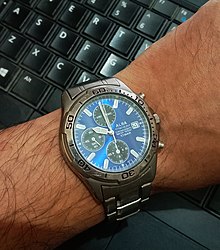보아 시그마
Boa sigma| 보아 시그마 | |
|---|---|
 | |
| 과학적 분류 | |
| 왕국: | 애니멀리아 |
| 문: | 챠다타 |
| 클래스: | 파충류 |
| 주문: | 스쿼마타 |
| 서브오더: | 독사 |
| 패밀리: | 보아과 |
| 속: | 보아 |
| 종류: | B. 시그마 |
| 이항명 | |
| 보아 시그마 (Smith, 1943년) | |
 | |
| Boa sigma 분포 범위 | |
| 동의어[2] | |
| |
흔히 멕시코 서해안 보아 콘트롤러로 알려진 보아 시그마는 보아과에 속하는 뱀의 일종이다.그 종은 멕시코 서부의 고유종이다.보아 시그마는 이전에는 보아 수축제와 같은 종으로 간주되어 왔으며, 나중에는 보아 임페레이터와 같은 종으로 간주되어 왔지만, 2016년에는 유전적인 이유로 보아 시그마를 별개의 종으로 간주해야 한다는 주장이 제기되었다.
분류법
보아 시그마는 1943년 [3][4]호바트 뮤어 스미스에 의해 원래 수축자 시그마로 묘사되었다.이 아종은 Islas Marias의 뱀만을 포함했고, 널리 인정받지 못했다; 대신, 많은 [4][5][6]저자들에 의해 그것은 본토 아종인 Boa crestrictor imperator와 동의어였다.
21세기에, 유전자 연구는 보아 수축제가 종 복합체라는 것을 밝혀냈다.처음에, Boa 수축제 임페라토르는 종 수준으로 올라갔지만, 곧 새로운 Boa 임페라토르 안에 다른 종들이 둥지를 틀었다는 것이 밝혀졌다.Card et al. (2016)에 따르면, 보아 시그마라는 이름은 이 세 번째 [4]종에 사용 가능하다.그러나 카드 등의 유전자 연구에는 완모식표본과 파라타이프가 [4][7][8]수집된 Islas Maria의 샘플이 포함되지 않았기 때문에 더 많은 연구가 필요하다.이러한 불확실성에도 불구하고, 보아 시그마는 유효한 [2][9]종으로 널리 받아들여져 왔다.
계통발생학
3월 14일 ~ )는 중화인민공화국(, 2016년)의 다양성 보드의 다양성이 있다고 설명했다.[11]
분포 및 서식
보아시마는 테완테펙 [12]지협 서쪽 멕시코 태평양 연안을 따라 분포한다.최북단 기록은 소노라에서 [13]나온 것으로 해발 1,420m(4,659피트)[14]에 이른다.보아 시그마 분포 범위에는 세 개의 섬이 포함된다.마리아 마드레, 마리아 막달레나, 마리아 클레오파스.[12]
종 분포 모델링을 바탕으로 보아 시그마는 열대 건조림 생태지역 내에서 주로 서식하는 반면 보아 임페라토르는 [11]강수량이 많은 지역을 선호하는 것으로 보인다.오악사카에서는, 이 두 종 사이에 접촉 구역이 있지만,[2][11] 그곳에서 교배가 일어나는지는 불분명합니다.
민속학
소노라 동부와 남부에서는 지역적으로 코루아, 코루가, 코루바, 쿨레브론 또는 리마코아로 알려진 보아 시그마가 물의 수호자라고 널리 알려져 있습니다.다른 뱀들과 달리, 보아 시그마는 시골 소노란들의 보호를 받고 있는데, 이는 보아를 죽이면 샘이 [15][16][17]마르게 된다고 생각하기 때문입니다.
레퍼런스
- ^ "Appendices". CITES. Retrieved 2022-01-14.
- ^ a b c Uetz, P.; Freed, P.; Aguilar, R.; Hošek, J., eds. (2022). "Boa sigma". The Reptile Database. Retrieved 2022-03-28.
- ^ Smith, Hobart M. (1943). "Summary of the collections of snakes and crocodilians made in Mexico under the Walter Rathbone Bacon Traveling Scholarship". Proceedings of the United States National Museum. 93 (3169): 393–504. doi:10.5479/si.00963801.93-3169.393. Retrieved 2022-03-28.
- ^ a b c d e Card, Daren C.; Schield, Drew R.; Adams, Richard H.; Corbin, Andrew B.; Perry, Blair W.; Andrew, Audra L.; Pasquesi, Giulia I.M.; Smith, Eric N.; Jezkova, Tereza; Boback, Scott M.; Booth, Warren (September 2016). "Phylogeographic and population genetic analyses reveal multiple species of Boa and independent origins of insular dwarfism" (PDF). Molecular Phylogenetics and Evolution. 102: 104–116. doi:10.1016/j.ympev.2016.05.034. PMC 5894333. PMID 27241629. Retrieved 2022-03-28.
- ^ Lindemann, Laurel (2009). "Boa constrictor". Animal Diversity Web. Retrieved 2022-03-28.
- ^ "Hog Island Boa". BioLib. Retrieved 2022-03-28.
- ^ Nolasco-Luna, Jose Rafael; Barraza-Soltero, Ilse K.; López-Montes, Manuel A.; Moreno-López, Jesús A.; Escobedo-Galván, Armando H. (2022-02-28). "An updated checklist of the herpetofauna from Isla María Cleofas, Mexico". Check List. Pensoft Publishers. 18 (1): 241–252. doi:10.15560/18.1.241. ISSN 1809-127X. S2CID 247178452. Retrieved 2022-03-28.
- ^ Loc-Barragán, Jesús A.; Ramírez-Silva, Juan Pablo; Woolrich-Piña, Guillermo A. (December 2016). "Boa sigma (Smith, 1943). Diet". Mesoamerican Herpetology. 3 (4): 1015–1017. Retrieved 2022-03-28.
- ^ Uetz, P.; Freed, P.; Aguilar, R.; Hošek, J., eds. (2022). "Boa imperator". The Reptile Database. Retrieved 2022-03-28.
- ^ Suárez-Atilano, Marco; Burbrink, Frank; Vázquez-Domínguez, Ella (December 2014). Riddle, Brett (ed.). "Phylogeographical structure within Boa constrictor imperator across the lowlands and mountains of Central America and Mexico". Journal of Biogeography. 41 (12): 2371–2384. doi:10.1111/jbi.12372. Retrieved 2022-05-27.
- ^ a b c Suárez-Atilano, Marco; Rojas-Soto, Octavio; Parra, Juan L.; Vázquez-Domínguez, Ella (September 2017). "The role of the environment on the genetic divergence between two Boa imperator lineages". Journal of Biogeography. John Wiley & Sons, Ltd. 44 (9): 2045–2056. doi:10.1111/jbi.13006. ISSN 0305-0270. S2CID 90091483. Retrieved 2022-03-28.
- ^ a b Reynolds, R. Graham; Henderson, Robert W. (September 2018). "Boas of the World (Superfamily Booidae): A Checklist With Systematic, Taxonomic, and Conservation Assessments". Bulletin of the Museum of Comparative Zoology. Museum of Comparative Zoology, Harvard University. 162 (1): 1–58. doi:10.3099/MCZ48.1. S2CID 91781892. Retrieved 2022-03-28.
- ^ Van Devender, Thomas R.; et al. (2020). "Distribution and Ecology of the Northernmost Mexican West Coast Boa Constrictor (Boa sigma)". Herpetological Review. 51 (3): 433–438. Retrieved 2022-03-28.
- ^ Sky, Jacobs (2018). "Boa sigma" (PDF). Herpetological Review. 49 (2): 287. Retrieved 2022-03-28.
- ^ Van Devender, Thomas R.; Reina-Guerrero, Ana Lilia (March 2022). "In the shadow of Picacho de Bacoachi: the Tribes of Basaitequi" (PDF). Sonoran Herpetologist. 35 (1): 30–37. ISSN 2333-8075. Retrieved 2022-04-09.
- ^ Van Devender, Thomas R. "Research in the Sierra Madre Occidental of Eastern Sonora, Mexico: Wide-ranging Tropical Animals". Arizona-Sonora Desert Museum. Retrieved 2022-04-09.
- ^ Turner, Dale S.; et al. (June 2022). "Amphibians and Reptiles of Rancho Las Playitas area, Sonora, Mexico" (PDF). Sonoran Herpetologist. 35 (2): 62–71. ISSN 2333-8075. Retrieved 2022-07-08.


